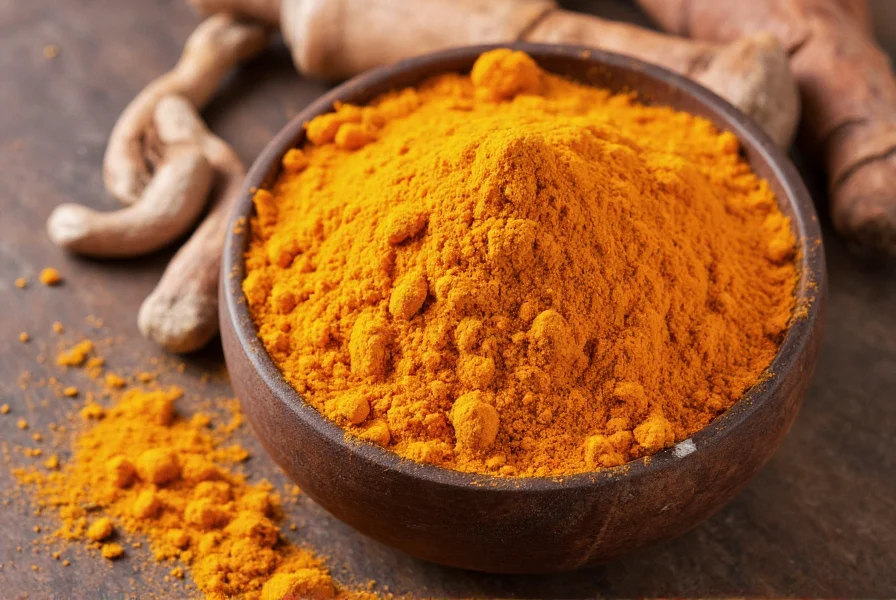When exploring natural compounds for wellness, few have garnered as much scientific attention as curcumin and turmeric. Understanding the relationship between these two closely connected substances is essential for making informed decisions about their use. While often used interchangeably, there are critical distinctions that affect their efficacy and applications.
The Fundamental Relationship Between Turmeric and Curcumin
Turmeric (Curcuma longa) is a flowering plant in the ginger family, native to Southeast Asia and India. The bright yellow-orange root has been used for thousands of years in traditional Ayurvedic and Chinese medicine. Curcumin, meanwhile, is one specific polyphenol compound that gives turmeric its distinctive color and represents just 2-8% of the turmeric root's composition.
This distinction matters significantly when considering health applications. Most of turmeric's scientifically studied benefits actually come from curcumin, not the whole spice. Research published in Advances in Experimental Medicine and Biology confirms that curcumin accounts for approximately 77% of turmeric's curcuminoids—the active compounds responsible for its therapeutic effects.
Scientific Evidence of Health Benefits
Over 30 clinical trials have investigated curcumin's effects on various health conditions. The most compelling evidence supports its anti-inflammatory properties. A 2016 review in the Journal of Medicinal Food analyzed multiple studies and concluded that curcumin supplementation significantly reduced inflammatory markers like C-reactive protein (CRP) and interleukin-6.
For joint health specifically, research shows promising results. A double-blind study published in Phytotherapy Research found that 500mg of curcumin twice daily provided greater improvement in pain and physical function for osteoarthritis patients compared to 50mg of diclofenac sodium, a common NSAID medication.
| Health Benefit | Supporting Evidence Level | Recommended Daily Dose |
|---|---|---|
| Anti-inflammatory effects | Strong clinical evidence | 500-1500mg curcumin |
| Joint pain relief | Good clinical evidence | 1000mg curcumin |
| Cognitive support | Promising preliminary evidence | 80-500mg curcumin |
| Cardiovascular health | Moderate clinical evidence | 500-1000mg curcumin |
Overcoming Bioavailability Challenges
One of curcumin's biggest limitations is its poor bioavailability—meaning your body struggles to absorb and utilize it effectively. Standard curcumin has an absorption rate of less than 1% when consumed alone. This explains why traditional preparations often combine turmeric with black pepper (which contains piperine) or fats.
Modern supplement formulations address this issue through several approaches:
- Liposomal curcumin: Encapsulated in fat molecules to improve absorption
- Curcumin with piperine: Increases bioavailability by up to 2000%
- Nanoparticle formulations: Break curcumin into smaller particles for better uptake
- Phospholipid complexes: Bind curcumin to phospholipids for enhanced delivery
Safety Considerations and Practical Usage
Curcumin is generally considered safe at recommended doses, with most studies using 500-2,000mg daily without significant side effects. However, certain populations should exercise caution:
Individuals taking blood thinners should consult their healthcare provider before using curcumin supplements, as it may enhance the effects of medications like warfarin. Those with gallbladder issues should also use caution, as curcumin may stimulate bile production.
For dietary incorporation, adding turmeric to meals with black pepper and healthy fats (like olive oil or coconut milk) can significantly boost curcumin absorption. Golden milk—a traditional Ayurvedic beverage made with turmeric, black pepper, and warm milk—is an excellent example of this principle in practice.
Evidence-Based Recommendations
Based on current research, here are practical recommendations for using curcumin and turmeric effectively:
- For general wellness: 500mg of enhanced curcumin daily
- For joint support: 1,000mg of enhanced curcumin twice daily
- For culinary use: 1-3 teaspoons of turmeric daily combined with black pepper and healthy fats
- Look for supplements with third-party testing verification
Remember that consistency matters more than high doses. Research suggests that regular, moderate intake provides better long-term benefits than occasional high doses. Most clinical studies show measurable effects after 4-8 weeks of consistent supplementation.
Frequently Asked Questions
What's the difference between turmeric and curcumin supplements?
Turmeric supplements contain the whole turmeric root powder, which is only 2-8% curcumin by weight. Curcumin supplements isolate and concentrate the active compound, typically providing 95% curcuminoids. For therapeutic benefits, curcumin supplements are significantly more potent since you'd need to consume 20-50 times more turmeric to get equivalent curcumin amounts.
How long does it take for curcumin to work for inflammation?
Most clinical studies show measurable reductions in inflammatory markers within 4-8 weeks of consistent daily use. For joint pain specifically, many participants report noticeable improvement within 2-4 weeks. The timeline varies based on the formulation's bioavailability, dosage, and individual factors like metabolism and the severity of inflammation.
Can I get enough curcumin from cooking with turmeric?
It's challenging to reach therapeutic levels through dietary turmeric alone. You'd need to consume approximately 15-20 grams (3-4 teaspoons) of turmeric daily to match the curcumin content in a standard 500mg supplement. Even then, without enhanced absorption methods (like adding black pepper and fats), most of the curcumin passes through your system unabsorbed. Culinary use provides health benefits but likely not at therapeutic levels for specific conditions.
What's the best time of day to take curcumin supplements?
For optimal absorption, take curcumin supplements with meals containing healthy fats. Dividing the daily dose (for example, 500mg twice daily rather than 1,000mg once daily) may provide more consistent blood levels. Some research suggests taking curcumin in the morning may support cognitive benefits throughout the day, while evening doses might better support overnight recovery processes.
Are there any drug interactions I should be aware of with curcumin?
Yes, curcumin may interact with blood thinners (like warfarin), diabetes medications, and certain chemotherapy drugs. It can enhance the effects of anticoagulants, potentially increasing bleeding risk. If you take prescription medications, consult your healthcare provider before starting curcumin supplements. Most interactions occur at higher therapeutic doses rather than culinary use levels.











 浙公网安备
33010002000092号
浙公网安备
33010002000092号 浙B2-20120091-4
浙B2-20120091-4